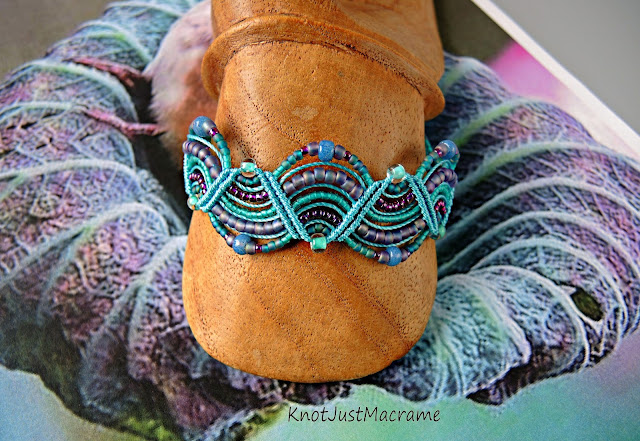Well, I am in full on, all day all night, prep for Bead Fest. Right now it is polymer clay on my work table.
I am really feeling the panic for sure.
(though I do have these all made, which is a start)
However, this post is not about my panic, or the hundreds and hundreds of beads that still need to be made and painted, or the class I still need to assemble kits for and prepare. Nope, this is about something else.
My polymer clay oven.
A few years ago, I got myself a convection oven for firing polymer clay. I got an oven thermometer to check the temperature and used it here and there, on and off to ensure it was cooking properly. It heated nice and even and worked like a charm, for years. But something changed.
To check the cure, I usually try to break a couple beads to make sure they cured right. That is the ultimate test.
Well, I had a batch that broke. So I popped the oven thermometer I had inside, and it was reading differently then last time. I had been using a cheap dial thermometer from the store.
Claire Maunsell shared with us in a class I recently took, that she used a meat thermometer (thank you for that Claire!!)- which allowed her to constantly monitor the temp of the oven throughout the process, and you can even set an alarm to go off when it hits a certain temp so you don't overbake.
(you can take Claire's class here at Craftcast)
Well, I bought one.
I put both thermometers in the oven, within an inch of each other, and one read really low according to the temp on the oven and the other read high- well, not high the whole time, it had some crazy spikes. ???? AAAND, it was taking twice as long as before to reach temperature. So all day I messed around.
(here is my set up) The oven, with pizza stone on top (now) and the two thermometers I am using inside the oven (which are on top of the oven in the picture). The dial one is a cheap one, and I plan to invest in a better more acurate one of them as well. The digital is on the counter to the right of the photo with the probe that goes inside the oven sitting next to the dial thermometer.
At first, I thought perhaps my oven was getting old, and maybe I am wearing it out (which I still think is part of the problem) from reviews online, none seem to have a long life.
But in the course of re-firing the beads that weren't totally cured, and messing around with temperature and time, I found a few things out.
1. Placing a pizza stone (some use ceramic tiles) on top really helped the temperature to stay stable.
2. I have to set the oven above my target temp for preheat and allow up to 20 minutes (I keep my clay in there the whole time though) and then reset it for an hour.
3. I cannot have 3 shelves in there like I was doing, it was messing up the temperature too much. I can only do two.
4. Because ovens get older and things change, you need to constantly monitor the temps- with TWO thermometers. (who would have thought that not only your oven could be so off, but two thermometers could read so differently)
It was a long stressful day, but I got it figured out, and my pieces are once again rock hard and fully cured.
As I was really frustrated with this, I contacted Ginger Allman of the Blue Bottle Tree to find I am not alone, that there really is a good deal of playing around to figure out your oven, or in my case, re-figure it out after it starts to get old.
(Ginger is awesome and you can find all kinds of polymer information here http://thebluebottletree.com/)
No one really talks about it, but you need to find your own ovens sweet spot (my cure temp ended up being somewhere between what the two thermometers were reading- who KNOWS what that actually is). I had to let go of the numbers and target temps, and do some good old trial and error to get it back to firing correctly. (I also think my oven is on its way out, and I just hope it holds out until after Beadfest)
I think between my ovens over use, age and that most times I was only using two shelves, and came to the conclusion that maybe one reason it was firing better before, because the other pizza stone was on top insulating it, and there was more air flow inside.
At the end of the day, a good cure gives you strong beads. You can usually feel when they are not cured right. Bake to the correct temp (not always the correct setting on your oven) AND for longer then directions say.
Here are some resources about baking and ovens that I though had some great info. This video, shared in the beginning about her old toaster oven and how she rigged it with tiles to make it work better.
Ginger always has great info and did a 3 part series on baking polymer
Here is a blog with some thermometer recommendations
Anyhow- I really hope my crazy day can help head off some baking issues. I highly recommend two thermometers- even with a convection oven, because the efficiency can change over time.



















































